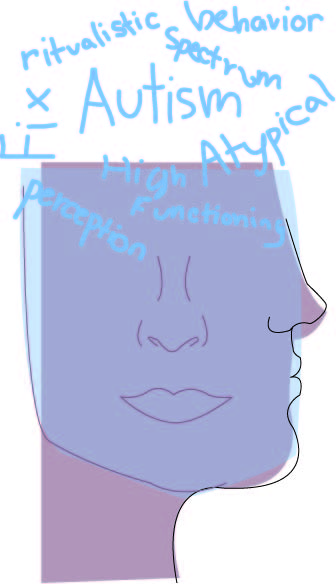Neurotypical
More stories from Ellen Garrett

In popular media, people with autism are painted as either anti-social tech geniuses or scholarly philosophers. However, people on the autism spectrum are much more than what we see in movies and TV shows. In order for neurotypical people to recognize people with autism outside of these stereotypes, neurodiversity needs to be embraced.
But first, what does it mean to be ‘neurotypical’? According to Joel Foreman MD, there is no real definition of neurologically ‘normal’. There is no stable definition for what is or is not neurotypical. However, there are some guidelines that Foreman established that can be used to differentiate between neurotypical and atypical. Neurotypicals are assumed to have strong communication and social skills, find it easy to make friends and establish romantic relationships and have no sensory issues.
Autism spectrum disorder is a developmental disorder which impairs the ability to communicate and interact, however it is not life-threatening, nor does it impair major life or thinking skills. According to Laurent Mottron, a psychiatrist who has studied autism for decades, in the mid-2000s, non-verbal people on the autism spectrum were presumed by some to be mentally retarded. However, people with autism have some advantages over neurotypicals.
In “The Man Who Mistook His Wife For a Hat”, Oliver Sacks describes meeting 26-year-old autistic twins who had been written off as mentally disabled and institutionalized during their childhood. One day, a box of matches fell off the table, with the contents spilling out onto the floor. Almost immediately the twins seemed to ‘count’ them and exclaimed that there were 111 matches in the box which they then spontaneously trisected into “37, 37, 37.” The twins could not explain how they counted the matches so quickly or why they broke the number into thirds. This is one example of the seemingly extraordinary tasks that people on the autism spectrum are able to complete with ease.
Mottron suggests that the brains of those diagnosed with autism choose information that it likes to process, and weeds out information it does not like to process such as verbal and social clues. While this can create social issues, according to a 2009 study, people on the spectrum are 40 percent faster at problem solving. This is because people with autism focus more of their brain’s resources on visual processing, and less on things like planning or impulse control.
According to spectrumnews.org, studies have shown that people with autism are skilled at noticing small details but also at noticing larger patterns. They also detect lines of symmetry within large, complex patterns with efficiency. This is because enhanced perception is a core feature of the autism spectrum disorder.
Neurodiversity a natural and valuable form of human diversity. According to theartofautism.com, the idea that there is one ‘normal’ or ‘healthy’ type of brain/mind is a culturally constructed fiction. It is no more valid than the idea that there is one correct religion, race or gender.
We need to move away from the idea that disorders like autism are something to be cured and instead embrace neurodiversity. Unless the effects of autism spectrum disorder make the life of the person who has it nearly unmanageable, there is no reason that we need to try to “fix” them.









